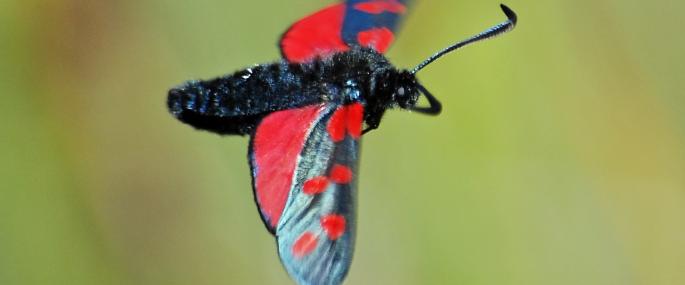The Six-spot Burnet Moth is a medium-sized, day-flying moth, commonly found in grasslands, woodland rides and sand dunes, where the caterpillars feed on Common Bird's-foot Trefoil. The adults feed on the nectar of knapweed, thistles and other grassland flowers, and females lay their eggs on the caterpillars' foodplants. The caterpillars hatch and feed, hibernating over at last one winter. They emerge the following spring and pupate in a papery cocoon attached to grass stems.
The Six-spot Burnet Moth relies on sensitive grassland and dune habitats that are disappearing from our countryside. However, The Wildlife Trusts are working closely with farmers, landowners and developers to promote wildlife-friendly practices. We have a vision of a 'Living Landscape': a network of habitats and wildlife corridors across town and country, which are good for both wildlife and people. You can support this greener vision for the future by joining your local Wildlife Trust.
